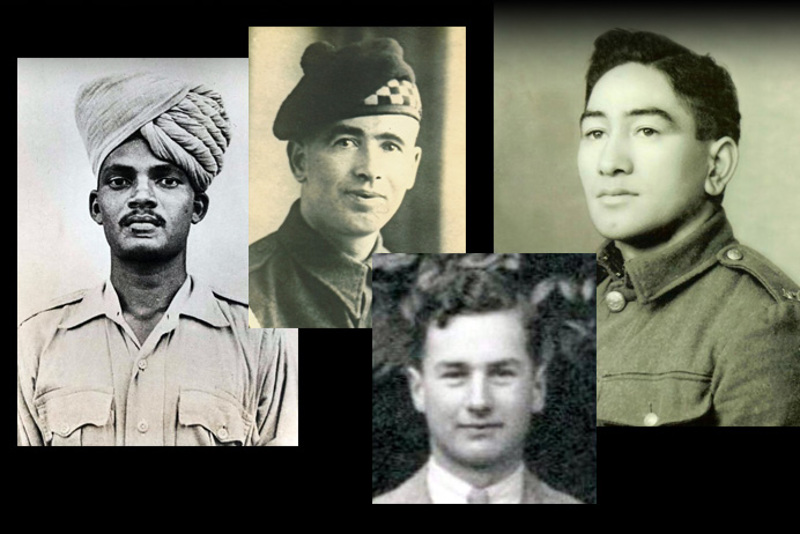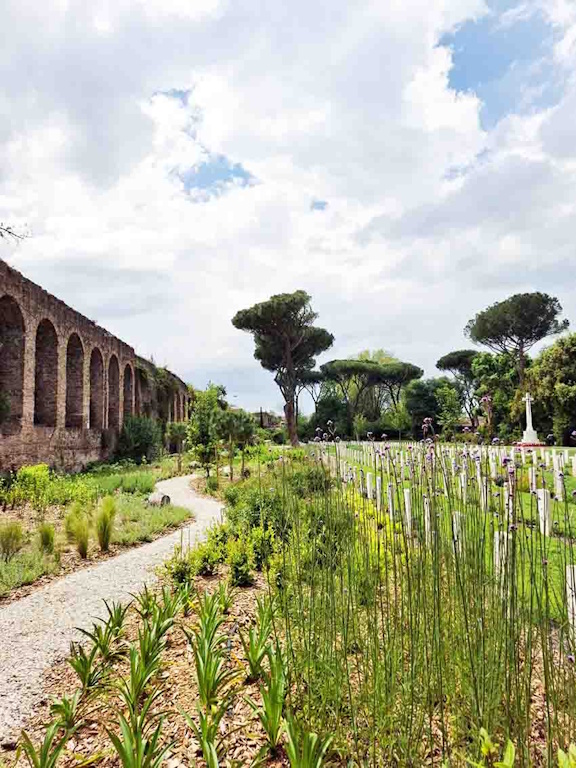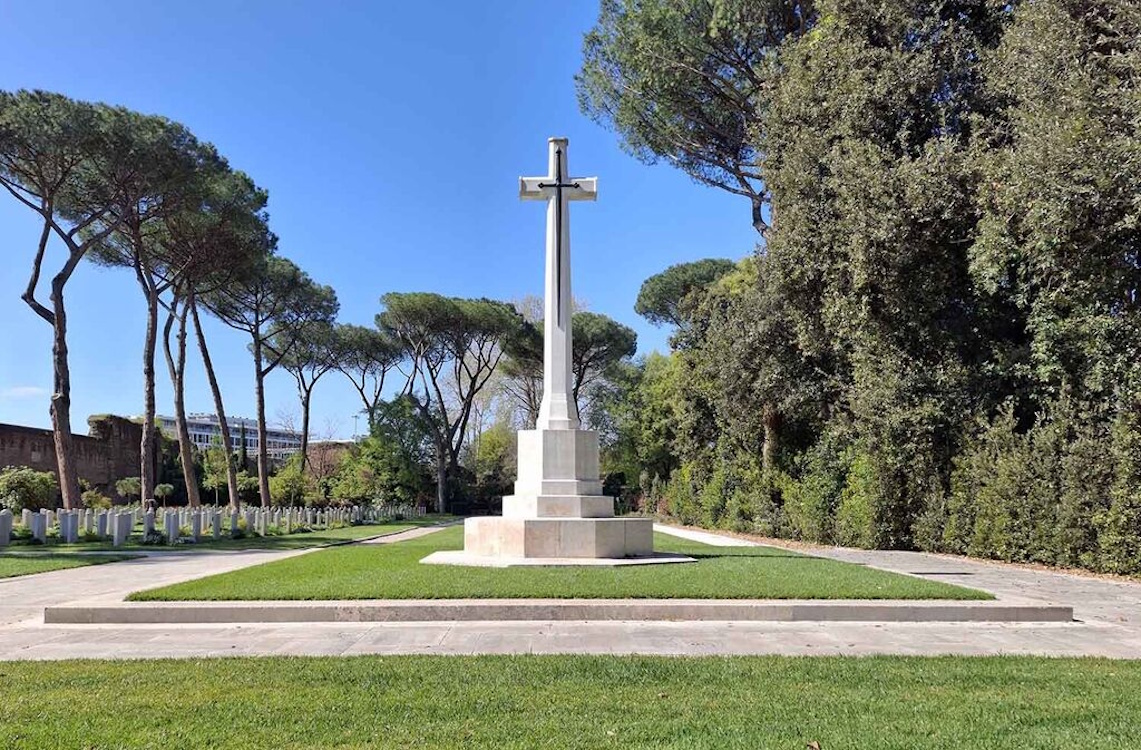Rome War Cemetery
- Country Italy
- Total identified casualties 422 Find these casualties
- Identified casualties from Second World War
- GPS Coordinates Latitude: 41.87504, Longitude: 12.47725
PLEASE NOTE
Please note that from 20 December 2025 to January 7 2026, the cemetery will be locked with a padlock during the gardeners' absence. Visitors can still access the cemetery, using the Padlock Combination 1221. We apologise for any inconvenience caused.


SHARE STORIES OF THE ITALIAN CAMPAIGN
If you'd like to know more about who we commemorate, visit For Evermore: Stories of the Fallen, the CWGC online commemorative resource. Here you can read and share the fascinating stories from some of the people who took part in the Italian Campaign.
Location information
Rome War Cemetery lies alongside and within the Aurelian Walls of the ancient city of Rome. It is reached from the Piazza Venezia, the centre of Rome, by going down the Via dei Fori Imperiali, past the Coliseum, and along the Viale Aventino as far as the Porta San Paolo. Before reaching this gate and the monument Pyramid of Caius Cestius, take the road to the right along the wall of the Protestant Cemetery, in which the poets Keats and Shelley are buried. Across the road at the far end of that cemetery, you will see Rome War Cemetery.
Coming by metro: take the exit Ostiense of metro line B and turn left at the exit following Aurelian Ancient Walls (viale del Campo Boario). Reach the roundabout and turn right passing under the arches of ancient walls. After 100m you will see the cemetery on the left side.
Alternatively, take the metro and get off at Piramide Metro Station, which is close to Rome War Cemetery, on Via Nicola Zabaglia 50, Monte Testaccio.
Cemetery address: Via Nicola Zabaglia 50 - 00153 Roma (RM) Lazio.
GPS Co-ordinates: Latitude: 41.87502, Longitude: 12.477238.
Visiting information
PARKING
There is public parking available in front of the cemetery. Please note that the carpark can be busy during working hours.
The car park has a tarmac surface with some uneven areas due to pine tree roots pushing the tarmac up at ground level.
ACCESS, LAYOUT AND MAIN ENTRANCE
The entrance to the cemetery is via a rotunda building (Tempietto). There are two small steps up into the building then two steps down on the opposite side, leading into the cemetery.
The Register box is located in a central table feature inside the entrance building.
Once inside the cemetery, there are gravel paths. Areas inside the cemetery without gravel surfaces are flat and level made of turf or grass. At the centre of the cemetery is a Cross of Sacrifice, and a Stone of Remembrance on a raised platform accessible by steps incorporated into the platform.
There are three stone benches at the opposite end of the cemetery, at the end of gravel paths leading from the entrance.
ALTERNATIVE ACCESS
There is an alternative entrance into the cemetery through an access point on the furthest side of the cemetery from the main entrance.
ADDITIONAL INFORMATION
Rome War Cemetery may be visited at any time. It is necessary to keep the cemetery padlocked outside the gardeners working hours due to the threat of theft and vandalism. The combination number to the padlock on the locked gate is 1221, the padlock is located at the rear of the gate behind two handles.
Gardeners working hours are:
Winter: Monday to Friday 0800 hrs to 1200 hrs and 1230 hrs to 1500 hrs.
Summer: Monday to Friday 0800 to 1200 hrs and 1230 hrs to 1500 hrs.
History information
On 3 September 1943 the Allies invaded the Italian mainland, the invasion coinciding with an armistice made with the Italians who then re-entered the war on the Allied side.
Progress through southern Italy was rapid despite stiff resistance, but the advance was checked for some months at the German winter defensive position known as the Gustav Line. Operations in January 1944 landed troops behind the German lines at Anzio, but a breakthrough was not achieved until 18 May when, after fierce fighting, Cassino finally fell to the Allies.
Rome was taken on 3 June as the German withdrawal continued. The cemetery was started shortly afterwards and was used mainly for burials from the occupying garrison, but a few graves were brought in from the surrounding country, and some soldiers and airmen who died as prisoners of war in Rome are also buried there.
Rome War Cemetery was designed by Louis de Soissons. It contains 426 Commonwealth burials of the Second World War.









